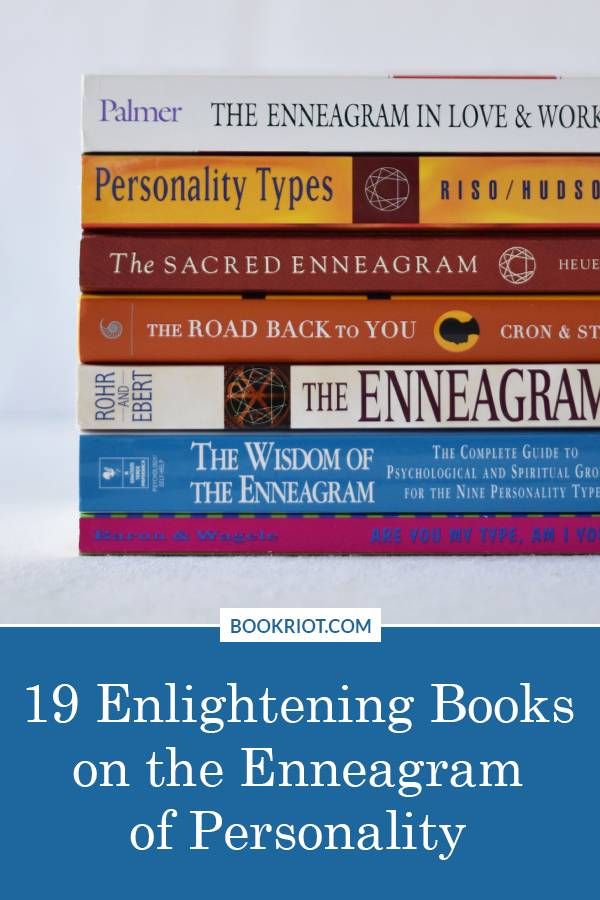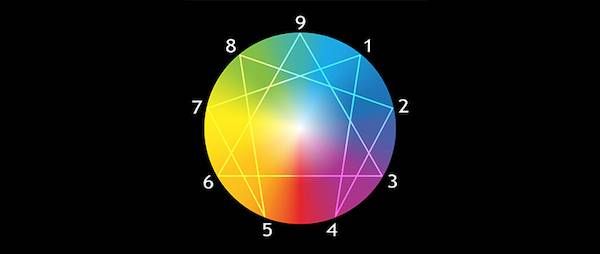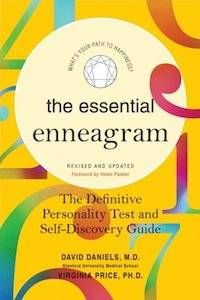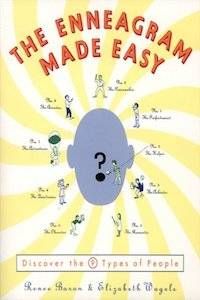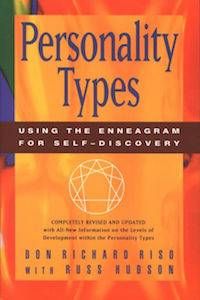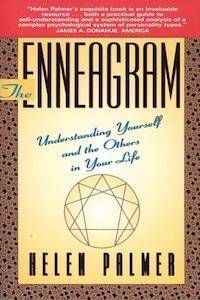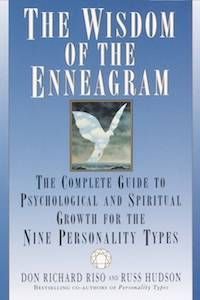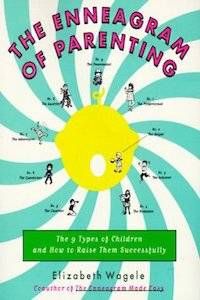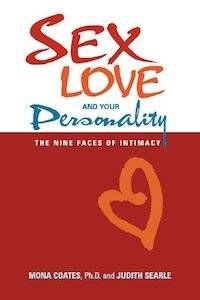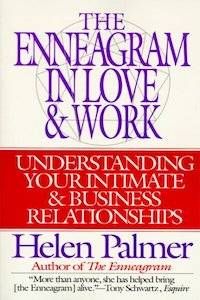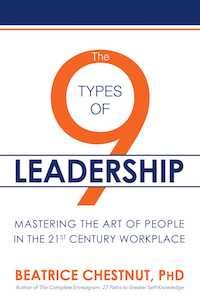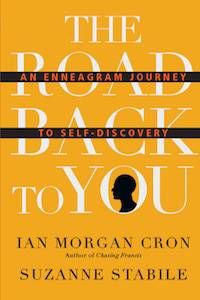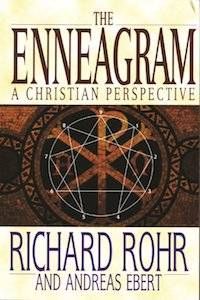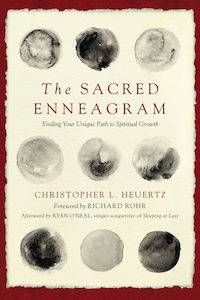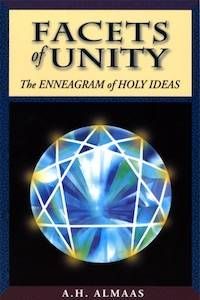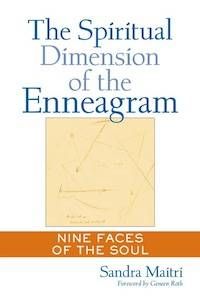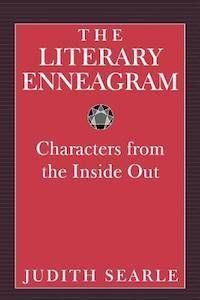
19 Enlightening Books on the Enneagram of Personality
If you’re into personality theory, you’ve probably heard of something called the Enneagram. The Enneagram is a personality framework that consists of nine core types. You may have seen its visual representation, which is sometimes mistaken for a pentacle.
The Enneagram has ancient roots. No one really knows where it originated, but it is thought to have come out of the Sufi tradition and that of the Desert Fathers. It wasn’t until the twentieth century that the early, more universal Enneagram theory was applied to human personality by Bolivian spiritual seeker Oscar Ichazo and Chilean psychiatrist Claudio Naranjo.
The Enneagram is often derided as pseudoscience—no better than the Zodiac or other superstitious claptrap—by laypeople and hardline skeptics. In fact, the CIA started using the Enneagram in 1994 to profile world leaders, the U.S. Postal Service has used the Enneagram to help employees resolve conflicts, and the very first international Enneagram conference was cosponsored by Stanford Medical School’s department of psychiatry. So while the complexities of the Enneagram could be hard to quantify in a laboratory setting, it has some substantial intellectual weight behind it. (For more on the relationship between science and the Enneagram, watch this video.)
The Enneagram isn’t just a personality inventory like Myers-Briggs or the Big Five. It’s a powerful tool for personal and spiritual growth that has many layers. It’s often said that the Enneagram won’t put you in a box; it will help you figure out which box you’re already in and show you the way out. I have certainly found this to be true in my own life.
If you’re brand new to the Enneagram and want to learn more, or if you’re already familiar with it and want to dig deeper, here are some books that will help you on your way.
Quick & Easy Introductory Books
Absolute beginners—start here! I’m not going to lie; the Enneagram can seem pretty complicated when you really get into it. These books make it easy to understand by distilling it down to the bare essentials.
 The Essential Enneagram by David Daniels, M.D. & Virginia Price, Ph.D.
The Essential Enneagram by David Daniels, M.D. & Virginia Price, Ph.D.
If you’re brand new to the Enneagram, this is the #1 book I recommend you start with. Instead of overwhelming readers with a lot of long, convoluted type descriptions, it summarizes the key identifying features of each type, which will make it easier for you to differentiate if you’re on the fence about which type you are. It also includes a helpful self-typing guide. Enneagram tests can be useful (I really like the Riso-Hudson Enneagram Type Indicator.) but ultimately, you are the only one who can determine your core type.
 The Enneagram Made Easy by Renee Baron & Elizabeth Wagele
The Enneagram Made Easy by Renee Baron & Elizabeth Wagele
I like this book because it touches on some of the key features of each type and how you can get along easier with people of different types. It’s peppered with little cartoons that illustrate each type’s eccentricities. My one caution is that the personality inventories at the beginning of each chapter are not likely to give you a clear and accurate result, so don’t rely on them. To type yourself, take the RHETI and/or read The Essential Enneagram (above).
In-Depth Introductory Books
When you have a handle on the essentials of the Enneagram and are ready to explore the many nuances and layers of the system, pick up one of the following books.
 Personality Types by Don Richard Riso & Russ Hudson
Personality Types by Don Richard Riso & Russ Hudson
When I was new to the Enneagram, this was the first book I read that made me fully appreciate just how on-point the theory really is. It felt like I was reading the operator’s manual to my mind and I highlighted pretty much the entire chapter on my type. Personality Types explores each type in-depth with a particular focus on the nine levels of health. The levels of health provide a picture of what each type looks like when they’re emotionally healthy, average, and unhealthy.
 The Enneagram by Helen Palmer
The Enneagram by Helen Palmer
Helen Palmer is one of the pioneers of the Enneagram in the narrative tradition, a “teaching method that promotes an open exploration of each personality type” by “listening to representatives of each Enneagram type share their personal stories and reveal their particular inner worlds and realities.” This book is another comprehensive introduction to the Enneagram theory that also includes the results of some early empirical research.
 The Complete Enneagram by Beatrice Chestnut, Ph.D.
The Complete Enneagram by Beatrice Chestnut, Ph.D.
One of the many layers of the Enneagram is something called the instinctual subtypes. The subtypes—social, sexual (one-to-one), and self-preservation—describe a person’s basic orientation to the world. If you multiply the nine core types by the three subtypes you get twenty-seven types, all of which are described in great detail in this book.
 The Wisdom of the Enneagram by Don Richard Riso & Russ Hudson
The Wisdom of the Enneagram by Don Richard Riso & Russ Hudson
This is my favorite Enneagram book. It offers a comprehensive overview of the Enneagram’s many layers and subtypes, but it’s a lot less dense than Personality Types or The Complete Enneagram. It also emphasizes the personal growth aspect of the Enneagram, with exercises and journal prompts for each type.
 Ennea-type Structures by Claudio Naranjo, M.D.
Ennea-type Structures by Claudio Naranjo, M.D.
As I mentioned in the introduction, Claudio Naranjo was one of the original teachers that developed the Enneagram in its modern form. So if you want to gain a fuller understanding of the evolution of the Enneagram, this is a great book to read. In it, Naranjo describes each of the nine types and offers suggestions for self-development.
Applying the Enneagram to Work & Relationships
In addition to being a great tool for personal growth, the Enneagram can help you better understand other people and resolve personality-driven conflicts. The following books will impart the power of the Enneagram to improve your relationships and succeed at work.
 The Enneagram of Parenting by Elizabeth Wagele
The Enneagram of Parenting by Elizabeth Wagele
This easy-to-read illustrated guide to parenting with the Enneagram offers practical advice on how to work with children’s personality traits and behavioral patterns in a way that will make them feel nurtured and engaged.
 Are You My Type, Am I Yours? by Renee Baron & Elizabeth Wagele
Are You My Type, Am I Yours? by Renee Baron & Elizabeth Wagele
The Enneagram can be especially useful in sorting out the conflicts that inevitably arise in a long-term romantic relationship. This concise illustrated volume describes what each type needs from a partner and how they tend to behave in relationships. It also identifies potential points of conflict between certain types and outlines what each type tends to like and dislike about every other type.
 Sex, Love, and Your Personality by Mona Coates, Ph.D. & Judith Searle
Sex, Love, and Your Personality by Mona Coates, Ph.D. & Judith Searle
In this book, sex and psychotherapist Mona Coates draws on her years of clinical experience counseling couples using the Enneagram to describe the way each type and instinctual subtype approaches love and sex. It’s chock full of case studies and anecdotes that give it a more personal feel than other Enneagram books.
 The Enneagram in Love & Work by Helen Palmer
The Enneagram in Love & Work by Helen Palmer
This book offers a cursory overview of each type and describes in great detail the dynamics of every possible combination in romantic and working relationships. It outlines the potential pitfalls of relationships between all nine types and can serve as a helpful reference when trouble springs up in your romantic or work life.
 The 9 Types of Leadership by Beatrice Chestnut, Ph.D.
The 9 Types of Leadership by Beatrice Chestnut, Ph.D.
This is a great book for leaders who want to be able to better solve people problems at work by “understanding why people do what they do, why we have conflicts with some people but not others, and how we can become aware of our blind spots.” It also helps leaders develop their own unique leadership style and strengths.
The Enneagram & Christian Spirituality
Perhaps because of its connection to the Desert Fathers or maybe because one of its first notable American teachers was a Jesuit priest, the Enneagram has become very popular in Christian churches as a tool for spiritual growth. The following books explore the spiritual side of the Enneagram through the lens of the Christian tradition.
 The Road Back to You by Ian Morgan Cron & Suzanne Stabile
The Road Back to You by Ian Morgan Cron & Suzanne Stabile
If you’re looking for an introductory text with a distinct Christian slant, this is the book you want. It briefly hits on all of the essentials—the levels of health; what they’re like in relationships, at work, and as children; the stress and security points (sometimes referred to as points of integration and disintegration); and the wings. There’s also a separate Road Back to You study guide that presents action items for personal growth.
 The Enneagram: A Christian Perspective by Richard Rohr & Andreas Ebert
The Enneagram: A Christian Perspective by Richard Rohr & Andreas Ebert
This book explores the symbolic representations of the nine types and provides examples of each in Scripture. It describes the Enneagram in more overtly religious terms, such as identifying the “temptation,” “root sin,” and “fruit of the spirit” of each type. There is also a chapter on Jesus and the Enneagram, which proposes that He perfectly represents the best qualities of all the Enneagram types.
 The Sacred Enneagram by Christopher L. Heuertz
The Sacred Enneagram by Christopher L. Heuertz
This is the latest contribution to Christian Enneagram studies. It specifically focuses on the role of contemplative prayer in spiritual growth and how the Enneagram can serve as a “sacred map” to the soul—revealing our strengths and blind spots. It argues that different types benefit more by approaching contemplative prayer in different ways—some with an emphasis on stillness, some on silence, and some on solitude—with practical advice for each.
The Enneagram & Other Spiritual Traditions
As I mentioned in the introduction, the Enneagram has Christian and Sufi origins and has also been integrated into other spiritual traditions. The following books explore the Enneagram in the contexts of Sufism and other mystical traditions.
 The Sufi Enneagram by Laleh Bakhtiar
The Sufi Enneagram by Laleh Bakhtiar
In this book, Islamic scholar and certified counselor Laleh Bakhtiar delves into the Sufi origins of the Enneagram. She specifically looks at the work of Rumi, which contains clues about the nine points on the Enneagram.
 Facets of Unity by A. H. Almaas
Facets of Unity by A. H. Almaas
Almaas’ approach to the Enneagram embraces a sort of nondenominational mystical spiritual tradition with an emphasis on the “Holy Ideas” of each type (a concept which is also found in Christian interpretations of the Enneagram). The goal is to understand the “psychological core” of each type in order to “bring each Holy Idea within reach, so its spiritual perspective can serve as a key for unlocking the fixation [of each type] and freeing us from its limitations.”
 The Spiritual Dimension of the Enneagram by Sandra Maitri
The Spiritual Dimension of the Enneagram by Sandra Maitri
In this book, Sandra Maitri, one of Claudio Naranjo’s original students, explores the spiritual dimension of the Enneagram without allegiance to any specific religious tradition. She “shows how the Enneagram not only reveals our personalities but illuminates a basic essence within each of us.”
The Enneagram for Book Lovers
Many writers use the Enneagram to help them craft realistic, three-dimensional characters. But even though the Enneagram has only existed in its modern form for a few decades, it’s easy to spot certain Enneagram types in literature dating back to ancient times. The final book on this list explores the Enneagram as applied to fictional characters.
 The Literary Enneagram by Judith Searle
The Literary Enneagram by Judith Searle
This book was written for readers who want to better understand the characters they meet in books and writers who want to tap into a powerful tool for character development. Through the lens of the Enneagram, Searle analyzes characters such as Peter Pan, Scarlett O’Hara, Madame Bovary, Jay Gatsby, Lady Macbeth, Humbert Humbert, Anna Karenina, Holden Caulfield, and many more.
The Enneagram was birthed into the modern world by two South American seekers, but unfortunately, most of the Enneagram books published in English are by white Western teachers. Still, as Christopher Heuertz notes in The Sacred Enneagram, Enneagram teachers from ethnically diverse backgrounds are on the rise. These teachers include Nina Barnes, Henna Minhas Garg, Talía Guerrero Gonzalez, Avon Manney, and Priabpran Punyabukkana. Hopefully, more of these teachers will publish their own contributions to Enneagram literature and the works of non-Western Enneagram scholars will be translated into English in the near future.
Like this post? Check out:
- The Enneagram Types of 100 Famous Authors
- The Enneagram Types of 99 Fictional Characters
- The Myers-Briggs Types of 101 Famous Authors
- The Myers-briggs Types of 202 Fictional Characters
- 16 Genre Recs Based on Your Myers-Briggs Type
- 10 Life-Changing Books for Introverts
- 10 Enlightening Books on Personality Types



